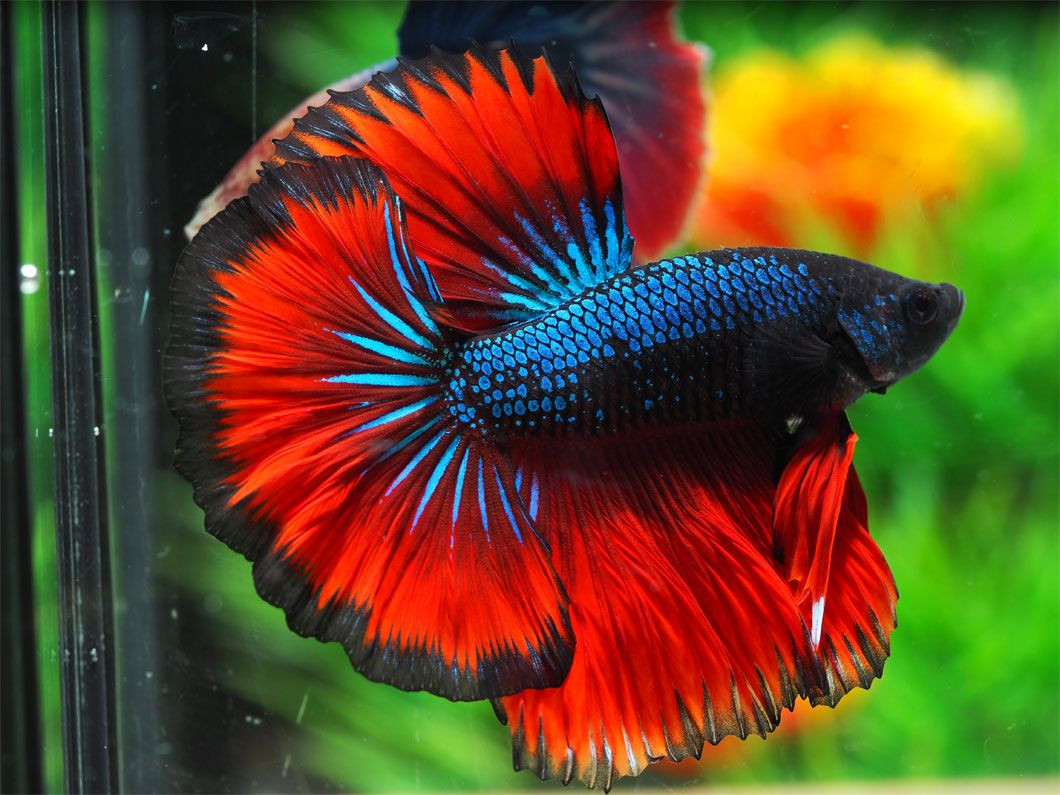
Half moon betta fish are beautiful, active freshwater species that make aquarium life even more enjoyable. Their care needs can be easily met provided that conditions in their tank remain ideal.
This species of fish is susceptible to fin rot, but can be avoided through proper tank water parameters and regular cleaning.
Feeding
Half moon bettas tend to favor foods high in protein and other essential vitamins and minerals in order to live long, healthy lives. Without adequate nourishment, half moon bettas may develop diseases.
Bettas should be fed two times each day - once in the morning and once at night - by placing food at the bottom of their tank so it can easily be consumed by their fish. Water temperatures between 76-81 degrees Fahrenheit should be preferred as half moon bettas cannot tolerate colder water well and could become lethargic or sick.
Bettas should be fed high-protein fish food that's low in carbohydrates. Bettas are sensitive to carbohydrate intake and could develop diabetes if fed too many carbs. Furthermore, these fish are susceptible to parasitic and fungal infections; most of which can be prevented through maintaining ideal tank conditions.
When your Betta fish swims slowly and calmly, this indicates their wellbeing and health. Conversely, stiff fins could indicate they're stressed.
Male and female Halfmoon bettas can easily be distinguished, with males boasting brighter colors and longer fins than their counterparts allowing you to pair them for breeding more easily.
Health
As with other pet fish, Halfmoon bettas are susceptible to bacterial, fungal and parasitic diseases that can be prevented by maintaining optimal water quality within their tank.
Aim to maintain water temperatures between 72-81 degrees Fahrenheit and maintain a moderate General Hardness level; Halfmoon Betta fish prefer soft waters with GH levels between 5-20; these conditions also tend to promote their survival as they cannot survive cold environments or environments with high chlorine content.
Halfmoon bettas, being carnivorous fish, require a diet high in animal proteins for proper health. Betta food pellets and flakes provide them with all of these vital nutrients; additionally you may feed your Halfmoon other protein-rich foods like daphnia, black worms, brine shrimp larvae and small insects as sources.
Halfmoon betta fins are delicate, so it is crucial that they do not come into contact with any rough surfaces or decor items in the tank. Stressed fish could bite at their own fins as an aggressive response or feeling threatened by other inhabitants of their aquarium.
Male bettas tend to become aggressive toward other male bettas and thus should not be housed together in an aquarium. Female bettas on the other hand tend to be less likely to display aggressive behaviors and can coexist peacefully with other species within an aquarium; it is best if both sexes remain separate for breeding purposes.
Care
Half moon betta fish require minimal changes in terms of tank water parameters, yet should still be kept under conditions that will promote their health. Their ideal temperatures for optimal health range from 72degF to 81degF; moderate hardness levels are best. Maintaining these consistent conditions is critical as bettas can quickly develop diseases without proper care; common ones include fin rot, velvet/rust and ich.
Cleaning your betta tank on a regular basis is also vital, as it will help prevent infections. Refill the tank once every week with fresh, oxygenated water to ensure optimal conditions for its survival.
Before breeding bettas, male and female specimens should be separated to reduce incompatibility issues and choose young bettas as breeding partners; this increases their chance of successful reproduction.
Betta fishes thrive in home aquariums when given adequate space and no aggressive tankmates, including Halfmoon bettas. If any issues arise with your Halfmoon's health it's recommended to consult a licensed veterinarian immediately.
Breeding
Halfmoon bettas are an exotic species of the popular betta fish breed. Their large fins spread out in an oval-shape that resembles half moon shape; thus their name. While they add vibrant beauty to your aquarium, Halfmoon bettas may become aggressive towards other fish and consume them without proper feeding; to protect yourself and others it is wise not to keep other types of fish together with this variant.
These fish thrive in environments with plenty of places for them to hide and explore, such as plants (both real and fake) as well as rocks and caves in their tank, to stimulate natural curiosity and prevent boredom. It is also wise to change out the water every week in your betta's tank in order to remove toxic substances and strengthen his immune system.
When breeding Halfmoon bettas, it is crucial that male and females of similar size and genetic history are paired together. Once this pairing has taken place, their eggs should start hatching into bubble nests in the tank.
